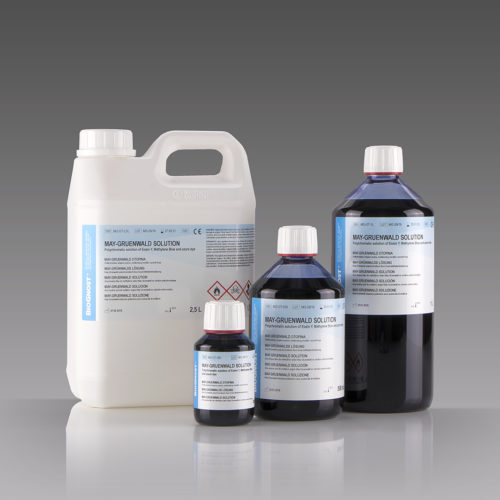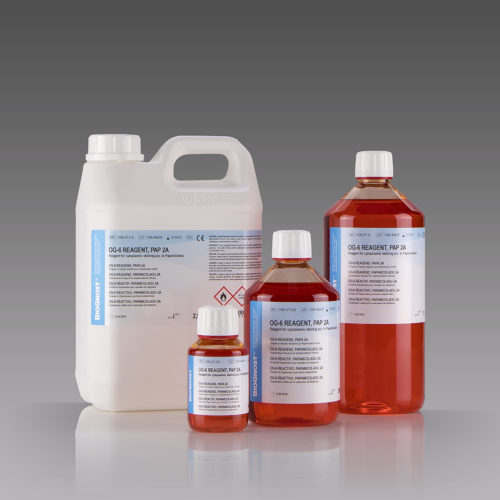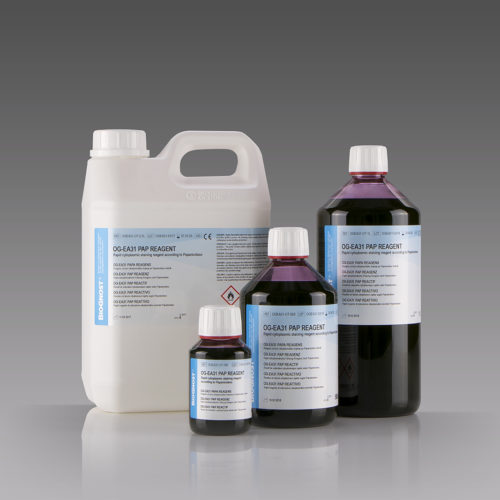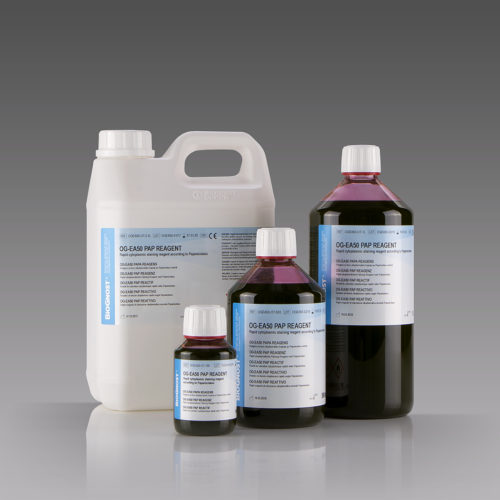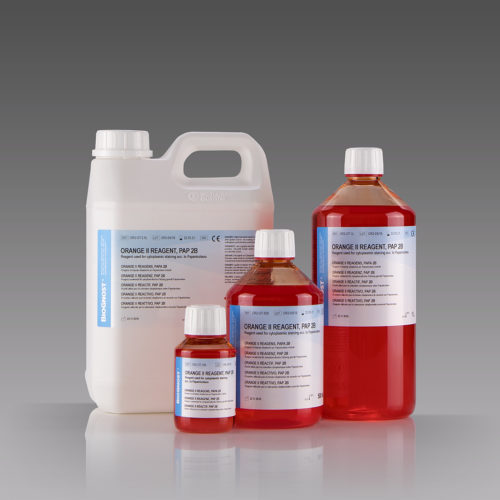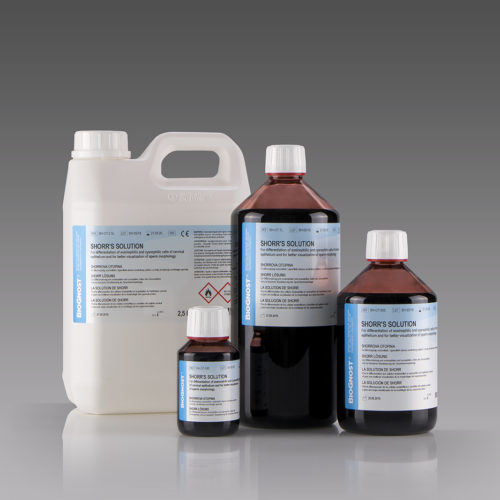Citology and hematology staining reagents
-
Histology and cytology/Citology and hematology staining reagents/Rapid and standard hematology reagents and kits/May-Gruenwald and Giemsa reagents
May-Gruenwald solution
Polychromatic solution of Eosin Y, Methylene Blue and azure dyes. For staining in hematology, cytology and staining sections of hematopoietic organs in histopathology.
-
OG-6 reagent, Pap 2A
Monochromatic reagent for counterstaining mature and keratinized squamous cell. Contains Orange G dye that stains the cytoplasm orange.
-
OG-EA31 Pap reagent
One-step polychromatic reagent used as counterstain for gynecology samples in cytology. Enables rapid staining and differentiation between epithelial cells whose cytoplasm is stained green and pink. It is not necessary to use OG-6, Pap 2A reagent during staining because it stains cytoplasm of keratinized cell orange at the same time.
-
OG-EA50 Pap reagent
One-step polychromatic reagent used as counterstain for gynecology samples in cytology. Enables rapid staining and differentiation between epithelial cells whose cytoplasm is stained blue and pink. It is not necessary to use OG-6, Pap 2A reagent during staining because it stains cytoplasm of keratinized cell orange at the same time.
-
Orange II reagent, Pap 2B
Monochromatic reagent for counterstaining mature and keratinized squamous cell. Contains Orange II dye that stains the cytoplasm intensive red.
-
Shorr’s solution
Enables clear differentiation of eosinophilic and cyanophilic cells of cervical epithelium. It is also used for a better visualization of sperm morphology.
-
Cytochemical staining kits and ancillary reagents/Histology and cytology/Citology and hematology staining reagents
Sudan Black B ECO kit
Phenol-free three-reagent kit for staining neutrophil granules in hematological smears.
-
Histology and cytology/Citology and hematology staining reagents/Rapid and standard hematology reagents and kits/Additional staining solutions for hematology and cytology
ThromboGnost solution
Solution for manual counting of thrombocytes.

